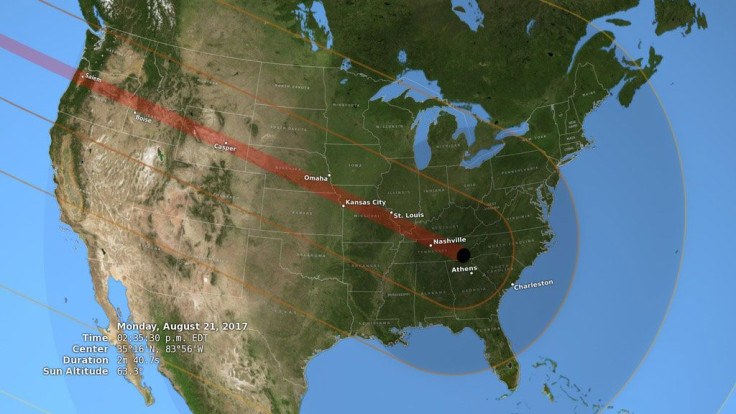August Solar Eclipse 2017: NASA Scientists Hope To Learn About Earth's Energy

The solar eclipse that will cross the continental United States in August is the first of its kind in the country since 1972 and is shaping up to be quite the event. People are planning to travel to the states where the total eclipse will be visible. But in addition to a unique experience for viewers, the eclipse will also offer researchers unique insight into the Earth’s energy.
NASA scientists are hoping to learn about how Earth absorbs energy and how clouds, one of the most unpredictable variables in computer models, can change the amount of energy that reaches the Earth’s surface. In a release Thursday, NASA said that the inspiration for the study came from a thick cloud that blocked sunlight in Boulder, Colorado in 1998.
Read: Solar Eclipse 2017: Should Cats, Dogs Wear Eclipse Glasses For Eye Protection?
The observations NASA researchers will make before, during and after the eclipse will come from instruments on the ground as well as satellites. All of those observations will then be used in a three dimensional radiative transfer computer model. The hope is that these observations used in a 3-D model will lead to better estimates of Earth’s energy input and output.
The Earth has what’s called an “energy budget,” or the balance of incoming and outgoing radiation all of which has to pass through the atmosphere and the clouds that take up space there. Those clouds have a grand impact on the energy budget staying balanced but they’re incredibly variable and therefore difficult for computer models to accurately predict or factor in. To make things more complicated clouds have changed due to industrialization and pollution making it difficult for scientists to discover how clouds act naturally.
NASA scientist Guoyong Wen and his team of researchers can already calculate the amount of light the moon will block when it passes the sun on August 21. They know the dimensions of the shadow the moon will produce as well as the light the moon will block, said the release from NASA.
Read: Total Solar Eclipse August 2017: What It Is, How And Where To See It
While the shadow cast by the moon during the eclipse and those cast from clouds do differ, similar calculations are used to understand their effects on the energy budget, said NASA. So the hope is that the calculations made of the eclipse will help improve the models and understanding around low thick clouds that regularly cover the Earth.
The 3-D calculations will act as a test to help better simulate clouds because they can factor in the way clouds reflect light in multiple directions rather than a one dimensional calculations that don’t have the same capacity.
© Copyright IBTimes 2024. All rights reserved.





















